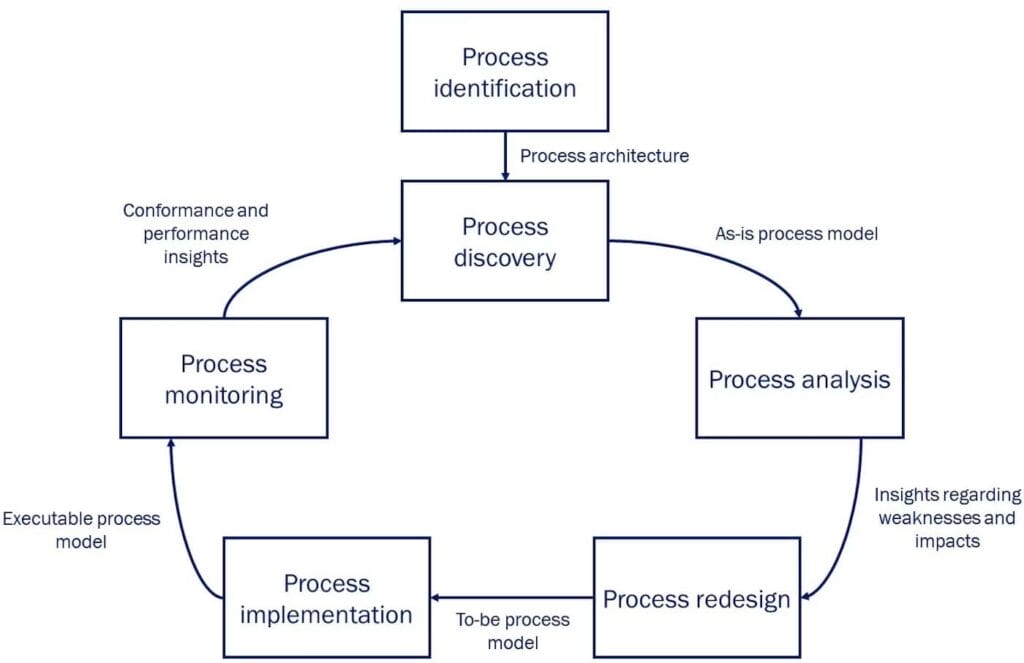Neither our businesses nor the environments in which they operate are static. Consequently, our business processes must adapt over time. That requires the iterative application of the Business Process Management (BPM) lifecycle.

Credit: Fundamentals of Business Process Management
- The process identification phase yields a process architecture—a high-level view of the organization’s key processes and relationships.
- The current state of each relevant process is documented as an “as-is” process model during process discovery.
- During process analysis, issues with the as-is process are identified.
- Process redesign is the phase in which opportunities for process improvement are addressed through the creation of “to-be” process models.
- Process implementation has two aspects: organizational change management and process automation.
- Process conformance and performance are measured and analyzed during process monitoring. That provides information to be assessed in a new round of process discovery.
Additional reading: this lesson was derived from Chapter 1 of Fundamentals of Business Process Management.

